Madi Acharya-Baskerville works with found objects and materials to highlight and articulate societal issues that are difficult to verbalise.
We are in the midst of a global waste crisis with landfill mounting up on our land and non-biodegradable mass filling up our oceans. I want to highlight the potential in the obsolete, how through transformative processes discarded matter can discover a new purpose and help to articulate new meanings.
Featured image: Work in Progress: Magdalen Road Studios, Oxford. Photo credit: Chris King.

Madi Acharya-Baskerville, working in the studio. Photo credit: Chris Honeywell.
How do you describe yourself in the context of challenging people’s perspectives via your work and art?
I am interested in highlighting the awkwardness of the unspoken within our culture. Through my work with found objects and materials I visually articulate what is difficult to put into words. This includes issues involving gender, marginalisation and dislocation from one’s host culture which are complex and challenge societies norms, of conformity and value. In particular, my aim is to challenge people’s perspectives on discarded matter, that whatever is thrown away is obsolete and can be forgotten. We are in the midst of a global waste crisis with landfill mounting up on our land and non-biodegradable mass filling up our oceans. Through my art, I want to challenge the perception that we do not need to worry about what is discarded, that all unwanted matter will go away, out of sight, out of mind, so to speak. In doing so I want to highlight the potential in the obsolete, how through transformative processes discarded matter can discover a new purpose and help to articulate new meanings.
How do you deal with the conceptual difficulty and uncertainty of creating new work?
Making new work is a very exciting process for me. I am inspired by what is topical at any given time, current concerns in our culture. My work is a space to take risks and play with materials I have purposefully selected to enter my working environment. Sometimes I can spend a lot of time creating something that does not work out but conversely a piece can come together unexpectedly quickly, like a kind of alchemy. Play and experimentation is at the heart of creating new work and although there may be uncertainty about how it turns out and how it is received I have an inner sense of when the work is finished and whether piece is working for me or not.

Installation view: Madi Acharya-Baskerville. Stories in my shed, Brunei Gallery, London, 2013. Photo credit: Glen Radcliffe.
Tell us about the evolution of your practice over the years. What would you call your style?
For several years now I have worked with what exists around us. Collecting from coastal environments was a starting point for my work but in the last few years I have been sourcing large branches from forests as I have become interested in this idea of being rooted versus experiencing rootlessness. I think this relates to being born in India and spending my early childhood there but then arriving in the UK, where I have lived ever since. So I feel rooted in Indian culture but uprooted from it at the same time. Over the years my practice has become more sculptural. I have also started to incorporate textiles into my work. This started by the discovery that some of my treasured fabrics handed down to me by my family had been eaten by moths! This included beautiful silk saris, Kashmiri shawls and other silks and woollen fabrics. Seeing this as another potential material I started taking these fabrics to the studio and arranging them on a shelf according to colour and pattern, almost like a paint pallet. Using textiles has now become a key part of my practice. I also like to use inexpensive fabrics from garments of throwaway fashion, give such materials another chance, a more positive way for them to be seen, saving them from landfill.
Overall, my work has gradually moved from a painting practice through to sculptural installation, whilst still retaining the original interest in colour and pattern expressed through painting.
I would describe my style as a hybrid of many different elements, working across different media, painting, through to sculpture and installation.

Chapman’s Poole, Madi Acharya-Baskerville. Dorset Coast, field trip for collecting materials, 2016, photo credit : Madi Acharya-Baskerville
What inspires you? Let’s talk about your frameworks, references and process.
I am inspired by walking in nature, it is exciting to explore woodlands and coastal locations and come across materials which throw up different creative possibilities. I am fascinated by what is washed up by the sea, eroded pieces of wood, plastic and rubber which bear a trace of time and humanity. The common denominator is usually something I have found. Back in the studio I put things in categories, in identical green boxes, sometimes seeing the studio rather like a laboratory. I see the objects and materials as my collaborators and enjoy creating unlikely combinations that look as if they have always existed together. My references include Indian miniature painting, crafts from rural India, tribal masks from the Africa and India. The process of creating my work is slow, I really like to take time over the process, deliberately trying to slow down time, in our time deprived, rapidly changing world. Some of the processes I engage in are intentionally repetitive, for example beadwork or painting a pattern that repeats itself. I see this as a kind of meditation. The juxtaposition of aspects of ancient art forms with objects that reference contemporary culture, creates a complex whole which resonates at multiple layers of meaning.

Andaman. Madi Acharya-Baskerville. Oil on found wood. Photo credit: Chris King.
What were your biggest learning and hiccups along the way in your artistic journey?
During my artistic journey I have realised the importance of artist networks, supporting fellow artists and engaging in a critical dialogue about my practice. Although my work quite often has its origins in nature, I am also drawn to urban environments and realise the importance of being in the city, close to other artists, gallery spaces and access to cultural events.
After completing my MA in Fine Art in Cardiff, I went from the coast to live in a rural location. I thought that living in an isolated environment would enable me to have a large studio space and work undisturbed without distractions. However I soon realised that it was difficult to work in isolation away from any other artists and I was much less productive during this time. Two years later I moved to the city and I am currently based in Oxford, as part of a studio collective which has been much better environment to work in.
I also regularly visit the coast to collect materials. So it has been essential for my practice to be based in an urban environment but with easy access to the coast. Being close to London has also provided me with many useful networking opportunities and spaces to exhibit work.
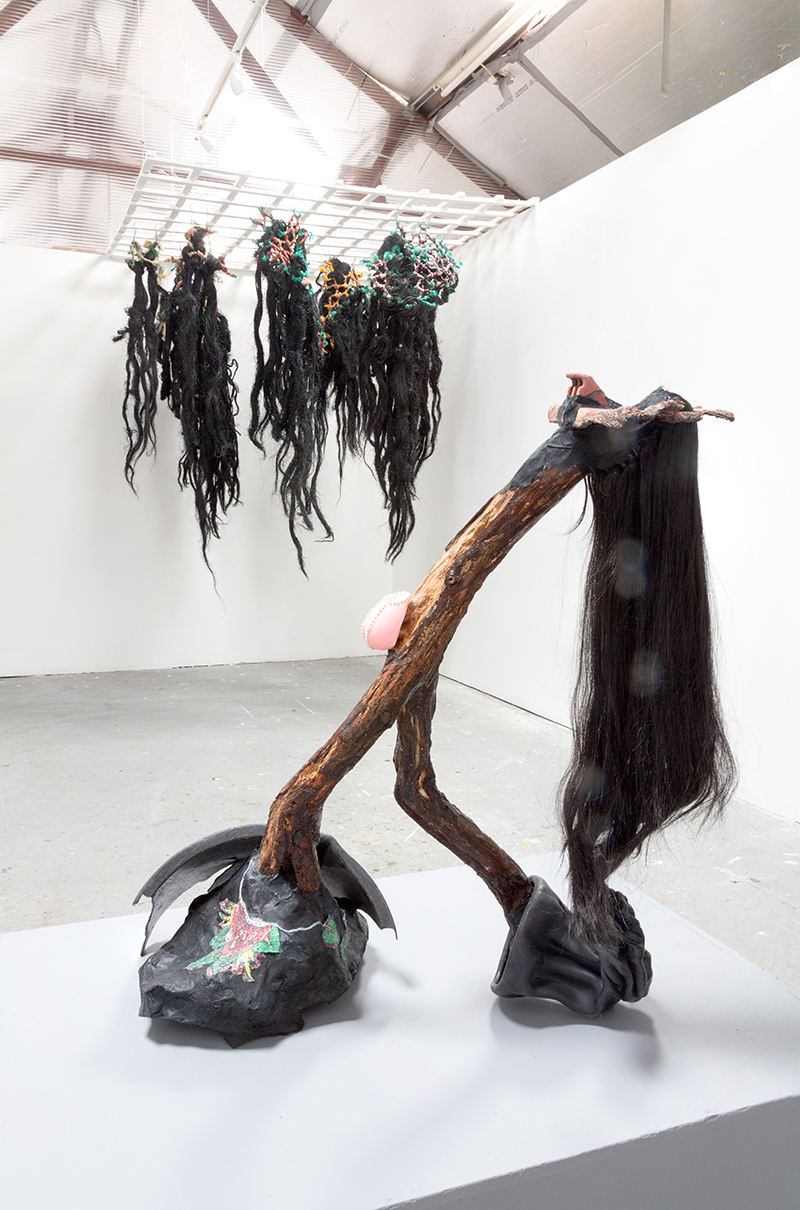
Installation view: I wish my hair was as long as yours, solo exhibition, 2019. Madi Acharya-Baskerville. Photo credit: Chris Honeywell.
How does your audience interact and react to the work you put out into the world?
The audience seems to be intrigued by the materials and objects that are presented to them in my work. With my installations for example ‘A walk in the park’ and ‘I wish my hair was as long as yours’ the audience were able to interact with the works due to their size and open structure. In the case of ‘A walk in the park’, the work framed and changed perceptions of the surrounding space as one looked though it. ‘I wish my hair was as long as yours’ was a more tactile work. Featuring hanging hair-like nylon fibres, it played on the viewer’s natural human urge to want to touch and feel hair, creating an intimacy between work and viewer. The ability to enter inside and under the work was intended to increase the intensity of this interaction.
‘The continuities and connections between organic and inorganic substances; the interactions between myth and current issues; the beauty of things! And the life we give them through ornamentation. All this is a great gift! Thank you’
– Quote from a visitor to Madi’s last solo show.
What were you working on when the lockdown was announced?
At the time I was working on a series of small-scale sculptures ‘ Unnatural Selection’, Survival of the Plastic’. This takes inspiration from Charles Darwin’s theory of evolution. Unnatural Selection is an inversion of Natural Selection, Natural Selection being the process whereby organisms better adapted to their environment tend to survive and produce more offspring. In this series, I wanted to introduce the idea of ‘Unnatural Selection by creating a new species…which will consist of birdlike creatures which as a result of swallowing vast quantities of plastic have become part plastic and so have developed plastic wings, beaks, feet and so on. I am making the work from plastic found on beaches, highlighting the plight of our birds and sea creatures in the context of non-biodegradability of plastic. The plastic they have swallowed has become part of their flesh, integral to their visceral and anatomical being.

Those Long Hot Summers. Madi Acharya-Baskerville. Mixed media sculpture. Photo credit: Chris Honeywell.
How has the lockdown affected your practice and plans?
I have not been able to work in the studio as regularly as before and this has interrupted the flow of my sculptural practice. I have been focusing more on my painting practice, creating small works at home. Themes relating to journeys, isolation and far away places are important in my paintings, which seems even more poignant during the lockdown with self isolation and restricted travel.
How are you balancing life and work at home during this period?
I am working mainly from my temporary home studio which is adjacent to my garden. This is actually working out better than I expected. It has good natural light and it is great to be close to foliage, flowers and birds. It is tempting to work continuously as there is now no clear boundary between my art and the rest of life. I like to take breaks by going for long walks. I am fortunate in that I live near a beautiful meadow, which has been grazing land for centuries, with natural wild life, cows and horses grazing there from neighbouring farms.

Burning Desire. Madi Acharya-Baskerville. Mixed media sculpture at group exhibition ‘Bye the Way’, Lewisham Arthouse, London, 2019. Photo credit: David Green.
What do you look for while viewing art? Which shows, performances and experiences have shaped your own creative process? Who are your maestros? Whose journey would you want to read about?
I am drawn to work that is visually rich and engages with an innovative use of materials across different media. The Arte Povera movement in Italy, linking nature and culture through the juxtaposition of mundane manufactured materials with organic materials or elements really resonates with my practice.
In terms of individual artists, I like the work of Joseph Cornell and Kurt Schwitters. It has been wonderful to be able to attend major retrospectives for both artists in London in recent years. I also love the work of Betty Saar based in United States whose work I was lucky enough to see in ‘Soul of the Nation’ at Tate Modern in 2017. I was recently reading about her artistic journey and she works with what she describes as the flotsam and jetsam of everyday life. I particularly like her assemblages and how she describes her work as a crossroads between death and birth. She also refers to herself as having a ‘mother wit’, when it comes to selecting materials and is quoted to have said ‘when I see something that I know is going to be art then I get it’. This also rings true for me as to why I select particular materials.
As a child I was given a book on the Ragamala Paintings, I spent a long time looking at the images and to this day I really love this book, its description of musical scores, the beauty of the paintings, the colours, interiors and the surrounding trees and landscape. The combination of written text and the visual image in these works has also been a huge source of inspiration for me.
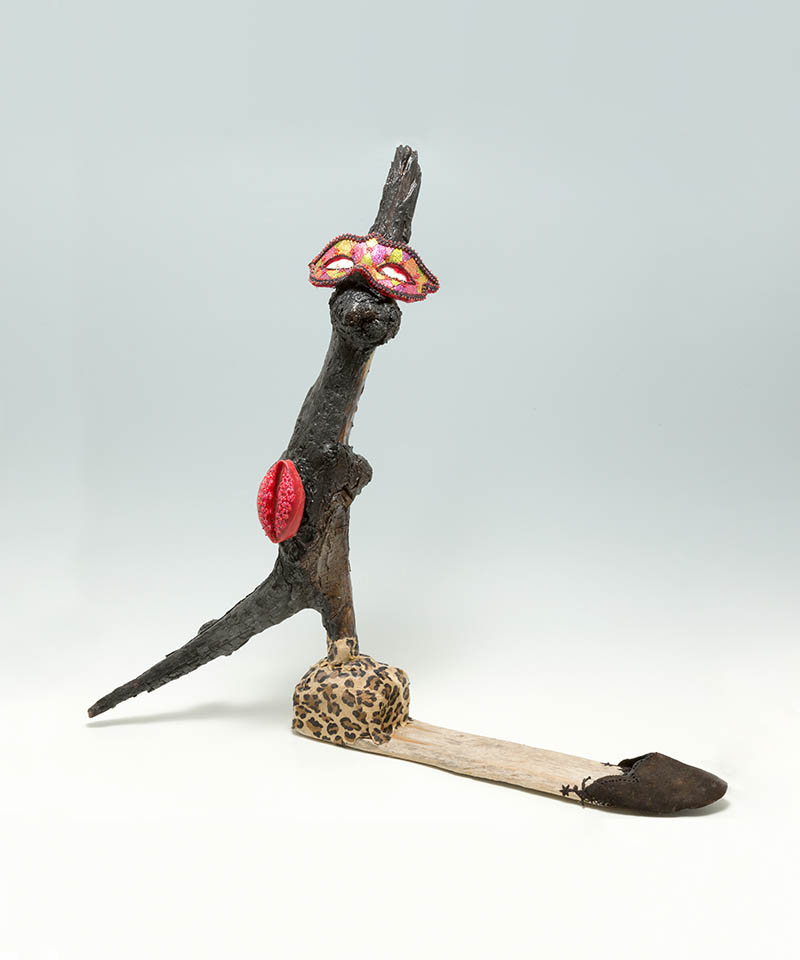
Fake it till you make it. Madi Acharya-Baskerville. Mixed media sculpture. Photo credit: Chris Honeywell.
Tell us about your studio, what kind of place is it? Could you describe your usual work-day in the studio?
My studio is part of a collective of 25 artists. I have being in my studio for some time and am very attached to it. It is an old warehouse, a former lampshade factory with large wooden beams to hang materials from. I am fortunate in that there is also a project space as part of the studios, which is great for trying out new work on a larger scale. As regards my usual work day, I go to the studio around 11am. I have several pieces I am working on at once. I usually make detailed fine work such as painting and beadwork towards the beginning of being in the studio. I tend to work on fixing parts and applying various mediums towards the end of the day. I also spend time looking at objects and materials and arranging and re arranging them as a way of familiarising myself with them.
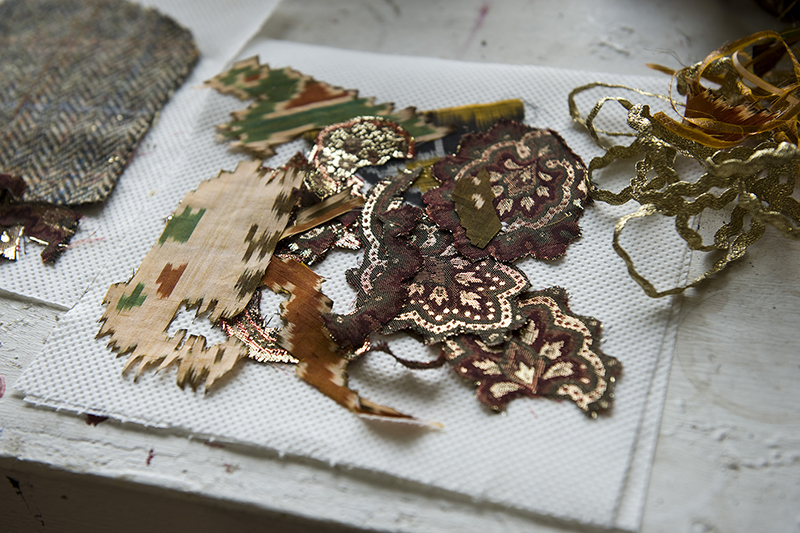
Work in Progress: Magdalen Road Studios, Oxford. Madi Acharya-Baskerville. Photo credit: Chris King.
Are you more of a studio artist or naturally collaborative by nature? How do you feel about commissions?
I like to be in the studio mainly but am also quite sociable and like to collaborate with other artists too. It is can be a difficult balance though. A few years ago I worked on a collaborative project in Kenya with several UK and Kenyan artists. This was a really worthwhile experience and gave me some significant ideas for future works. I like to take on commissions and so far my main experience in this has been through participatory projects for community groups. A recent example was the project ‘ Cabinet of Curiosities’ commissioned by Modern Art Oxford as part of their public program to complement the Kiki Smith exhibition ‘ I am a Wanderer’.
Is there any topic you would like to be mentored on?
So far most of my work has been studio based. I would like to develop larger scale works, which could be within the public art realm. As I have little experience of this, it would be really helpful to be mentored on this aspect of developing my practice.
For enquiries contact: madi@madiacharya-baskerville.org
Before you go – you might like to browse our Artist Interviews. Interviews of artists and outliers on how to be an artist. Contemporary artists on the source of their creative inspiration.






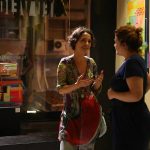

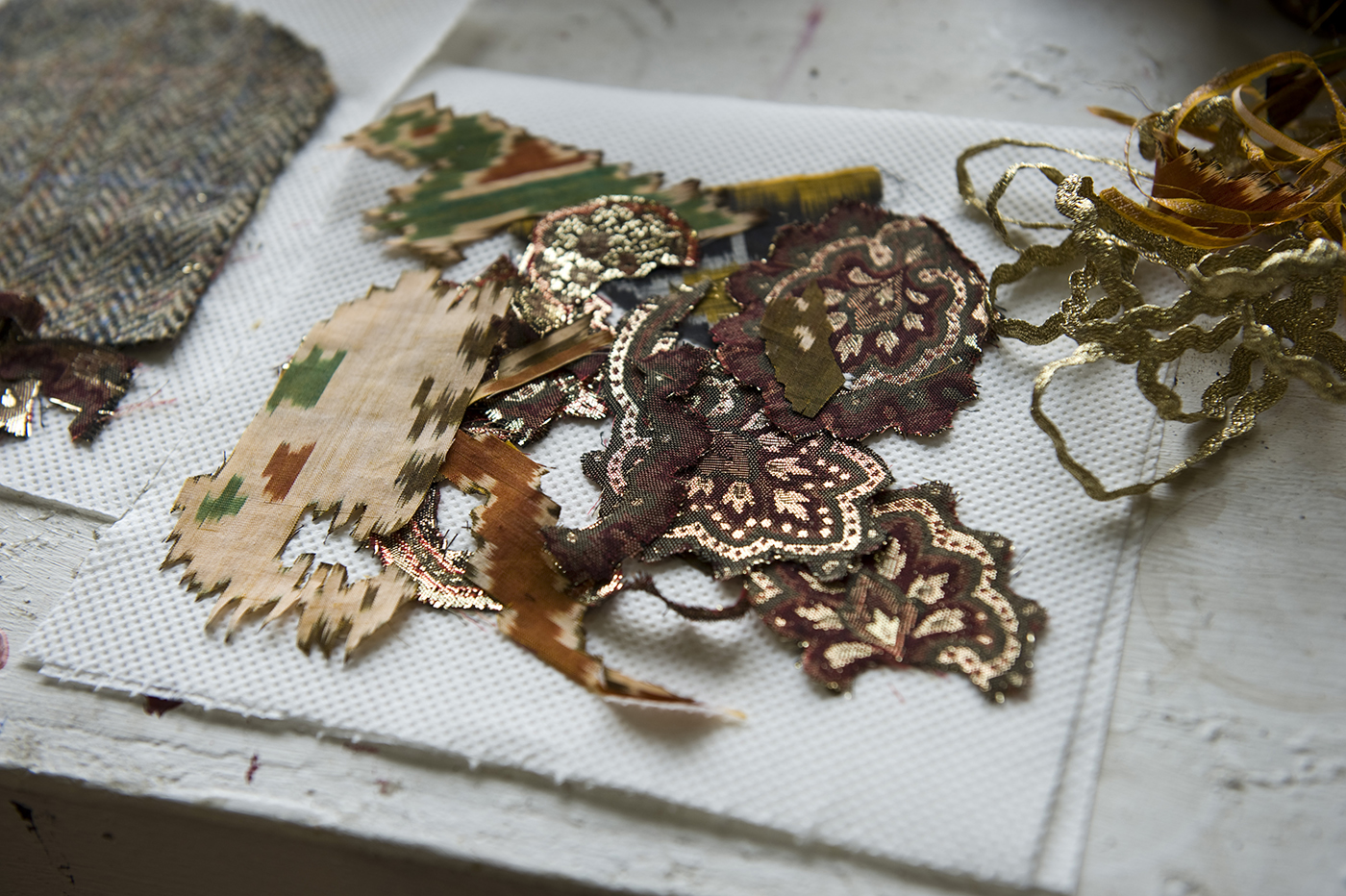

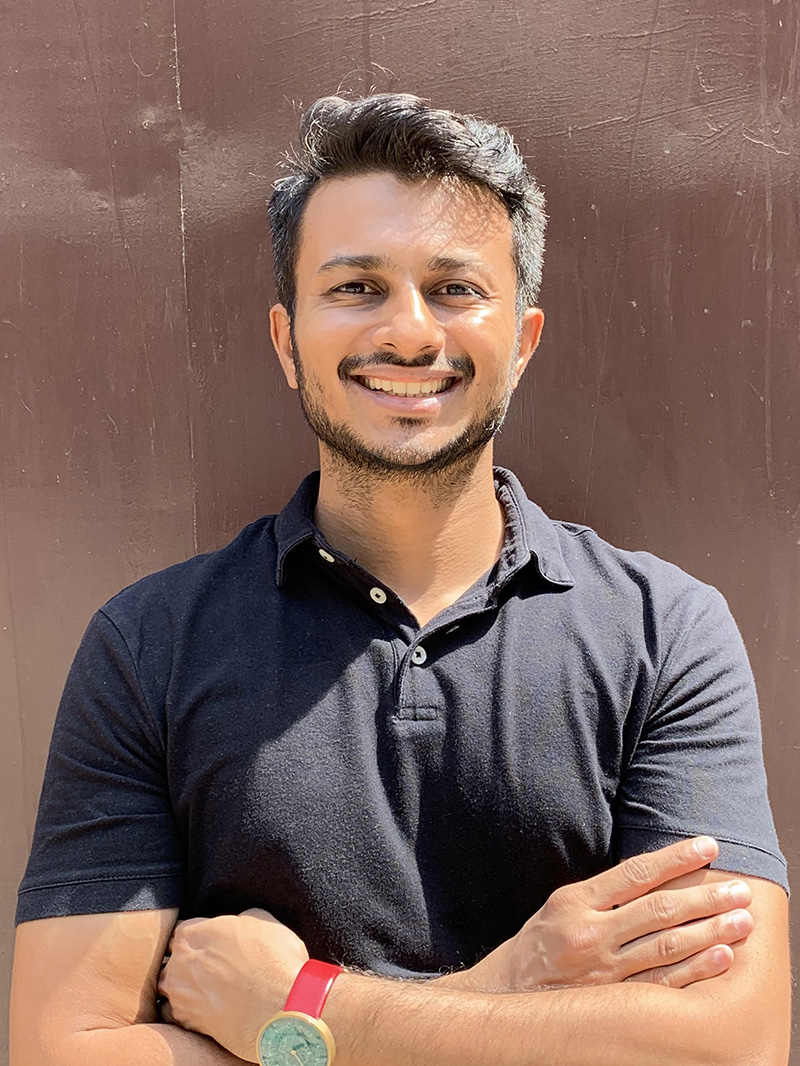

Add Comment